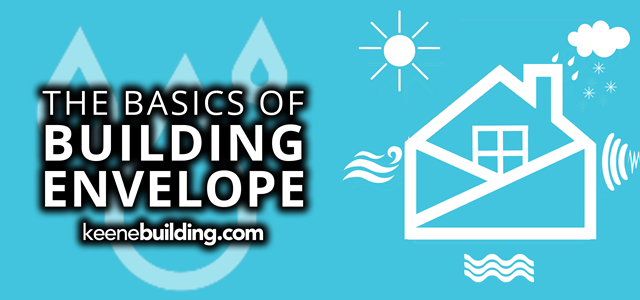
What is Building Envelope?
The building envelope is a physical separator between the conditioned and unconditioned environment of a building. The conditions of a structure can include the resistance to air, water, heat, light, and noise transfer. A rainscreen is the weather-facing surface of an exterior wall detail that stands off at least 1/8” from the moisture-resistant surface of the structural backup wall; this would be a brick veneer, stone veneer, or other types of masonry veneers.
Though often ignored point about rainscreens: A veneer that does not stand off from the moisture-resistant surface of the structural backup wall to create a cavity is NOT a true rainscreen; it is just a veneer.
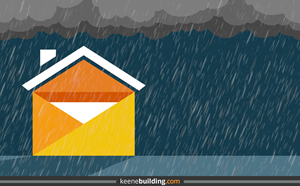
What makes up the Building Envelope?
Essential components of a building envelope include the foundation, wall assemblies, roofing systems, subfloor, exterior doors, windows, and exterior walls. To significantly increase the performance of a building or home, start with a tight building envelope design. The overall construction plays a significant role in controlling the levels of light, moisture, ventilation, and heat flow.
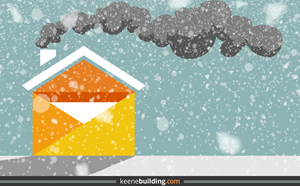
Why is a protected Building Envelope Important?
In the battle against the elements, your building envelope is your shield. Without a solid envelope, your structure is left open & vulnerable. Whenbuilding a house or building, a critical step to prevent mold, mildew, rot, and rust is air sealing, moisture management, and a tight build. A common phrase in the building industry is “build it tight, vent it right.” A tight building envelope will help avoid callbacks and headaches in the future. It also lowers energy usage and costs, prevents mold and mildew, and ultimately provides better maintenance.
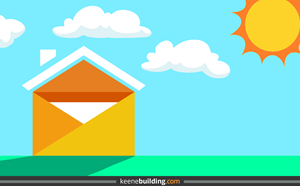
What’s the solution?
Moisture and ventilation are undoubtedly essential to proper construction. Keene Building Products has pioneered structured strand products in walls, roofs, and foundations to handle incidental condensation to create drying potential. Our products work in walls, masonry buildings, foundations, and plaza applications. They work to increase moisture drainage, ventilation, and isolation in every facet of commercial and residential construction.
FEATURED PRODUCTS:
Keene Building Products has soutions for the foundation, wall assembly, roofing, windows, and doorways (see below).
Click this link to watch a VIDEO ANIMATION on our Keene Building Products YouTube page.
BUILDING ENVELOPE - WALLS & SIDING PRODUCTS
BUILDING ENVELOPE - FOUNDATION PRODUCTS
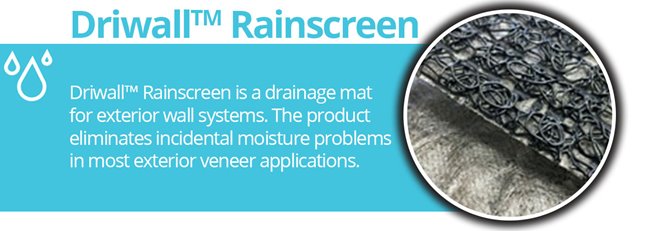
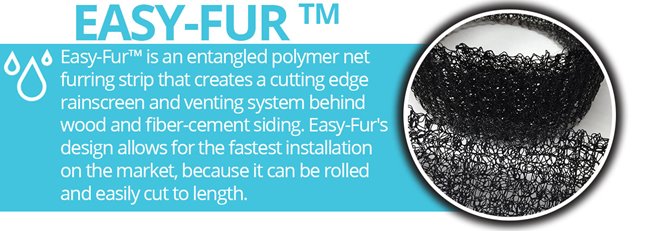
Click this link to watch a VIDEO ANIMATION on our Keene Building Products YouTube page.
BUILDING ENVELOPE - WALLS & SIDING PRODUCTS
BUILDING ENVELOPE - FOUNDATION PRODUCTS
How can I Seal the Building Envelope?
Although the underside of the veneer has protection against moisture intrusion, you still need to minimize any additional introduction of water surrounding windows and doors. Tightening the structures to prevent thermal leakage is a common practice for energy efficiency. However, this change in the construction process has led to less air infiltration, which advances moisture problems. When the window flashing installation is adequate, it helps combat these issues and almost all water intrusion into a structure and will work for the architecture. For the best results, use seal tape for easy application, window & door wrap, roof deck tape, joint & transition tape, roof repair tape, whatever your building envelope needs KeeneFlash 100 and KeeneSeal 100 has it covered.
What’s the solution?
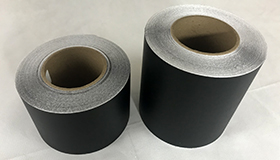
KeeneFlash 100 is a versatile, high-performance construction tape specifically engineered to provide superior adhesion to a wide variety of substrates throughout the building envelope.
KeeneFlash 100’s unique design makes it the go-to flashing and repair tape on the modern job site. Whether used as a window & door wrap, roof deck tape, joint & transition tape, roof repair tape, whatever your building envelope needs, we have it covered.
Joint failure is either adhesive or cohesive. A cohesive failure is the desired type of failure at the joint that is not due to the adhesion to the structure. In an installation, adhesive failure is a failure that occurs when the sealant does not adhere to the surfaces.
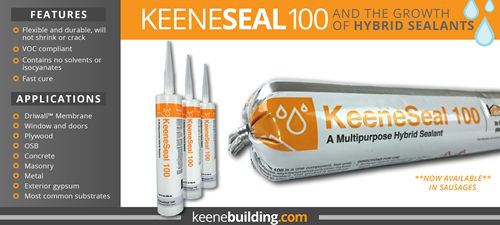
The proper installation of the KeeneSeal 100 along with backer-rod at all window and door openings and areas where dissimilar materials abut will protect your structure for years. The KeeneSeal 100 does not contain solvents or isocyanates that are flexible & durable; no cracks or shrinkage, and is VOC compliant. Dissimilar materials intersect where siding may abut brick, stucco, or stone. The thermal expansion and contraction of the various sidings cause different reactions that move with the change in weather and temperature, but with the KeeneSeal 100, you have an additional added layer of Preventable Prevention within your wall assembly that prevents the introduction of incidental moisture.